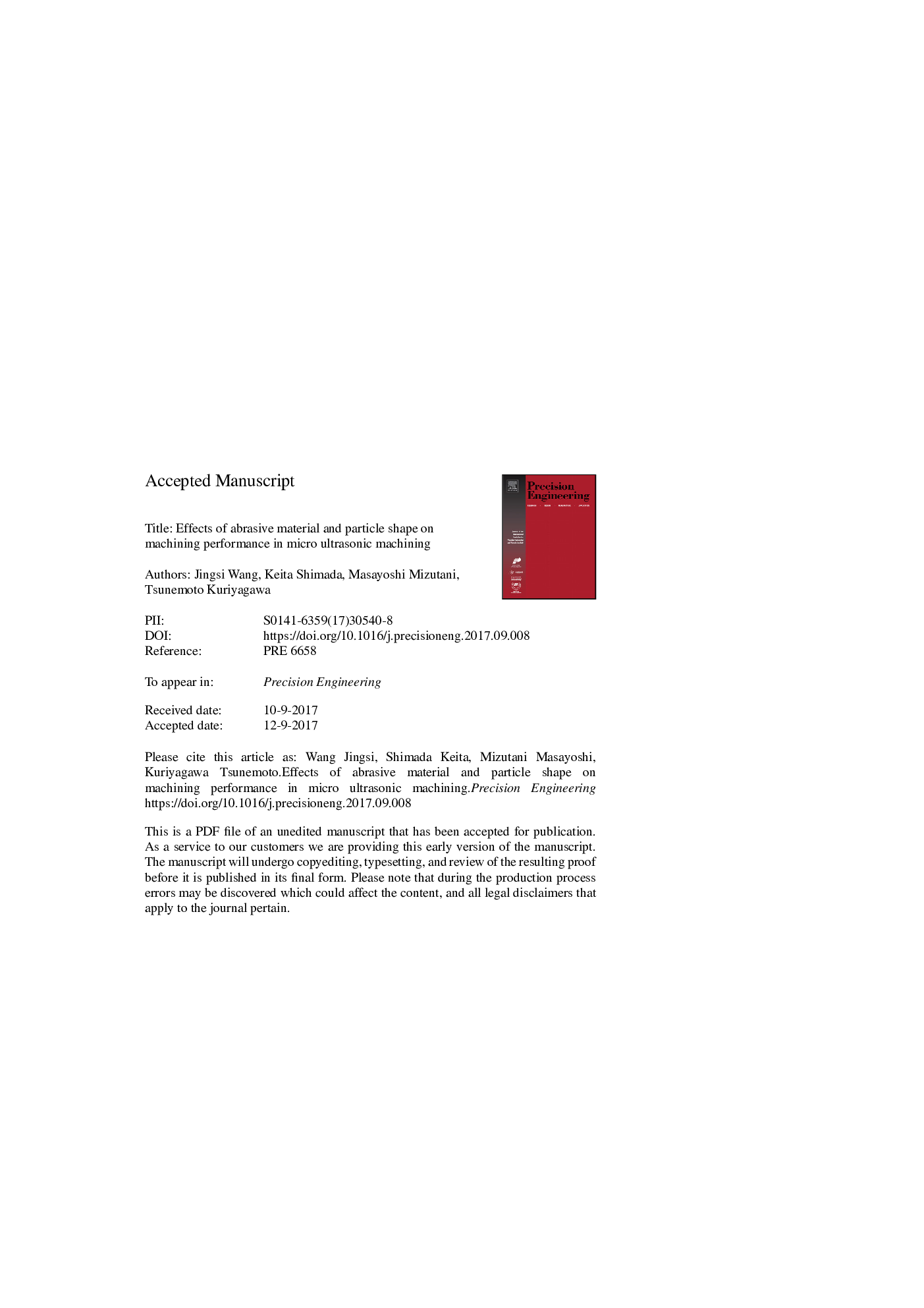| Article ID | Journal | Published Year | Pages | File Type |
|---|---|---|---|---|
| 7180573 | Precision Engineering | 2018 | 50 Pages |
Abstract
UltraSonic Machining (USM) shows potentialities in many manufacturing uses including fabricating structures of any shapes on hard and brittle materials. However, the nature of the mechanism of this process is still not clear. Crack generation for material removal and wear mechanism of abrasive particles and machining tools have not been thoroughly understood. Therefore, this paper presents a new method for studying USM by using a numerical simulation model built with both Smoothed Particle Hydrodynamics (SPH) meshfree method and Finite Element Method (FEM). Two main particle shapes: cubical and spherical shapes filled by SiC and Al2O3 materials were incorporated in the simulation models for studying the fracture process of the workpiece and abrasive particles. Hole drilling experiments by USM were also conducted to validate the simulation results. Both of the experimental and simulation results suggest that hard abrasive particles possessing spherical shapes resist wear better and it improves the material removal efficiency. However, the surface quality was inverse, large cracks were found to be remaining on the machined surfaces after etching. The best machining result was obtained with spherical Al2O3 abrasive particles in this work. The tool feed rate can be up to 40 μm/s, the cracks were less than 5 μm and 4 μm in depth for bottom and wall surfaces after etching, and the tool wear was the lowest. These results help us better understanding the nature of USM and provide technological indicators for selecting suitable process parameters for improving the machining performance.
Related Topics
Physical Sciences and Engineering
Engineering
Industrial and Manufacturing Engineering
Authors
Jingsi Wang, Keita Shimada, Masayoshi Mizutani, Tsunemoto Kuriyagawa,
